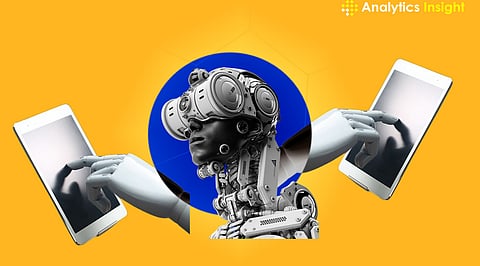

While technology is changing daily, it is the Edge AI that is largely playing the changing role of data processing and analytics. Developing artificial intelligence skills near data sources, Edge AI enables greater efficiency and lessens latency, introducing real-time decision-making. Here are the top 10 platforms driving the rise of Edge AI, showing the innovation and contribution of this very fast-paced developing field.
NVIDIA Jetson is one of the leaders in Edge AI, providing computing platforms and the power behind computing tailored for edge applications. The Jetson series includes modules like Jetson Nano, TX2, Xavier, and Orin concerning varied performance requirements. These platforms cover a wide spectrum of AI applications such as robotics, autonomous vehicles, and smart city infrastructures. With this kind of GPU-based accelerated computing, NVIDIA Jetson has emerged as the current resource for real-time data processing and deployment of AI.
Google Coral provides a full stack for Edge AI, its hardware in the form of an ASIC, the Edge TPU (Tensor Processing Unit), to accelerate machine learning inferencing on the edge. Products like the Coral Dev Board and USB Accelerator set up developers with the hardware required to efficiently deploy models into an AI. Developed by Google, Coral is popular for being incredibly user-friendly and employing seamless integration support with TensorFlow Lite, making it among the most popular platforms for edge AI projects.
Intel Movidius centers on vision processing solutions in Edge AI. Movidius Neural Compute Stick (NCS) is one such product that makes any edge device intelligent. Intel's Movidius is a go-to when we want to have a small power footprint with high performance in devices applied in security cameras, drones, and smart appliances. Movidius technology from Intel can perform advanced AI tasks, like object detection and facial recognition.
Microsoft Azure IoT Edge extends all the advanced cloud intelligence capabilities of Azure to the Internet of Things edge. The architecture that Microsoft Azure IoT Edge has enables devices to run artificial intelligence services and machine-learning models right on the edge of the field. The Azure IoT Edge market extends wide support for multiple use cases, from predictive maintenance to real-time analytics, to AI inference at the edge. It also provides a uniform management strategy for both cloud and edge resources.
Amazon Web Services (AWS) Deep Learning AMIs (Amazon Machine Images) extend the capabilities of edge AI through AWS Greengrass. Greengrass makes it possible to run AWS Lambda functions and machine learning models on edge devices, enabling real-time analytics and decision-making. AWS Deep Learning AMIs are built to be the backbone of a wide variety of edge applications, from industrial automation to smart devices.
IBM Edge Application Manager is a multi- and edge-environment solution. It manages, auto-scales, and optimizes AI workloads. It is used in different scenarios that run in industries such as manufacturing, energy, and retail, offering solutions for real-time data processing and deployment of AI at the edge.
Qualcomm has its own AI Engine, which can be found in its Snapdragon processors, granting exceptional AI processing at the edge. Its AI engine can run and accelerate machine learning and computer vision workloads. Therefore, it is suitable for mobile and mobile edge devices, smart cameras, and similar edge devices. The technology from Qualcomm essentially enables this kind of advanced functionality, ensuring real-time object detection and voice recognition, among others, to further enhance user experience and realize the potential of these devices.
Edge Impulse is a specialized platform for machine learning model development and deployment at the edge. The platform focuses on tools from data collection and model training to deployment for use in AI applications. Besides, this tool is device-agnostic; it takes everything from wearable sensors to industrial equipment and environmental monitoring systems on board. Well, this offers an alternative, very broad option for Edge AI.
Hewlett Packard Enterprise (HPE) Edgeline is a combination of edge AI and IT infrastructure to promote real-time analytics and AI processing. Edgeline platforms combine hard-core hardware with advanced software, hence enabling it to be eligible for difficult environments. HPE Edgeline applies in the manufacturing, transportation, and energy sectors. It, therefore, provides edge AI solutions that are reliable and efficient
Samsung ARTIK offers a single solution in Edge AI that couples hardware modules with development kits. The ARTIK platforms are specifically designed for IoT and edge AI applications, where they deliver integrated connectivity and computing power. Samsung's complete ARTIK solutions, through integration, support smart home, industrial automation, and healthcare applications because they leverage robust, scalable AI at the edge.
This is the top 10 AI Edge platform that enables the rise and reshaping of the way that data is processed and decisions are made. Due to their distinct features, all of these platforms range from the computing power of modules by NVIDIA Jetson to the AI accelerator efficiency of Google Coral, among others, which work together in a range of industries in the edge AI technologies advent. Investment in people unlocks gains in efficiency by reducing operational time lag and enabling real, actual real-time decision-making across a wide scale.
Staying informed of these leading platforms with Edge AI can afford one great vision and effectively build top-notch solutions in their projects and applications.
Edge AI refers to artificial intelligence technologies deployed at the edge of networks, closer to where data is generated, to enable real-time processing and decision-making.
Edge AI reduces latency, enhances efficiency, and allows for faster responses by processing data locally rather than relying on centralized cloud servers.
Common applications include autonomous vehicles, smart cities, industrial automation, security systems, and IoT devices.
NVIDIA Jetson provides powerful AI computing platforms with GPU-accelerated modules, supporting real-time data processing and a wide range of AI applications.
AWS Greengrass is a service that extends AWS cloud capabilities to edge devices, allowing for the deployment of machine learning models and AI services directly at the edge.
